Introduction
Many cat owners find themselves pondering the idea of getting a second cat. Whether it's to provide companionship for an existing feline friend or simply to add more excitement and liveliness to their household, there are several factors to consider before taking the plunge. Adding another cat to the family can have both its benefits and drawbacks, so it's important to weigh the pros and cons carefully.
Reasons to consider getting a second cat
There are various reasons why people may consider getting a second cat. It can provide companionship for an existing single-cat household, allowing their current furry friend to have a playmate and a companion. Additionally, some owners may feel that their current cat is lonely or in need of socialization, which can be addressed by introducing a new feline member.
Factors to think about before getting a second cat
Before making the decision, there are several factors to think about. The owner should consider if they have enough time, resources, and space to accommodate another pet. They also need to assess the compatibility between their current cat and the potential new addition. Factors such as age, temperament, and activity level should be taken into account.
In this article, we will explore the pros and cons of getting a second cat and provide tips on introducing them successfully. By weighing these aspects carefully and considering personal circumstances and preferences, cat owners can make an informed decision about whether adding another furry companion is right for them.
Reasons to consider getting a second cat

There are a few compelling reasons to consider getting a second cat. One of the main benefits is providing companionship for an existing single-cat household. Cats are social animals and having a feline playmate can help alleviate any loneliness or boredom that your current cat may be experiencing.
Another reason is to ensure that your current cat gets the necessary socialization. Introducing a new cat can help your first cat become more socially adept and develop better communication skills with other felines. It can also provide opportunities for physical stimulation and mental engagement through play and interaction.
Getting a second cat can also bring more excitement and liveliness to your household. Watching two cats play, cuddle, and chase each other can be highly entertaining for both you and them. It can add a sense of camaraderie and energy to your home that might not exist with just one cat.
Lastly, having two cats can be beneficial when it comes to keeping each other company during times when you're away from home. They can provide comfort and support to one another, reducing feelings of separation anxiety or loneliness for both cats.
Before making the decision, it's essential to carefully assess your ability to provide the necessary resources, time, space, and attention for another pet. Additionally, considering factors such as age, temperament, and activity level when choosing a second cat is crucial to ensure compatibility with your current furry friend.
Factors to think about before getting a second cat
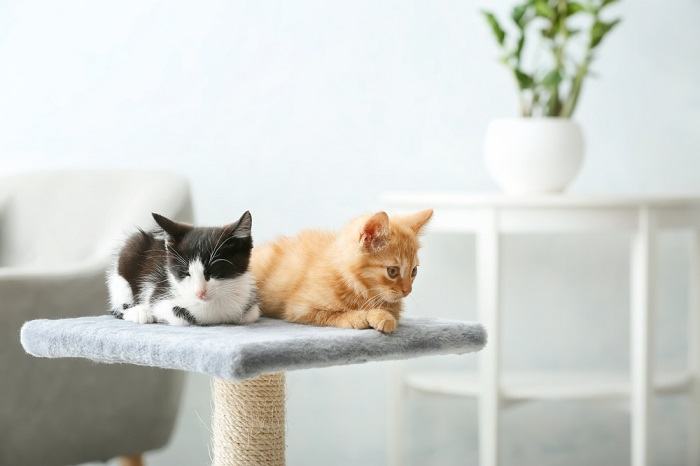
Before getting a second cat, there are several factors to consider. First and foremost, it's important to evaluate your current living situation and determine if it can accommodate another cat. Consider the space available in your home and whether there is enough room for both cats to have their own territory and personal space.
It's also crucial to assess your lifestyle and schedule. Cats require daily care, including feeding, grooming, and playtime. Adding a second cat will increase these responsibilities, so make sure you have enough time and energy to dedicate to both cats' needs.
Additionally, consider the financial aspect of owning two cats. Double the cats means double the expenses for food, litter, veterinary care, and other supplies. Make sure you are financially prepared to provide for both cats' needs throughout their lives.
Another factor to think about is the compatibility between your current cat and a potential new one. Cats have individual personalities, and not all cats will get along with each other. It's important to introduce them properly and monitor their interactions to ensure they can coexist peacefully.
Lastly, think about whether you are ready for the long-term commitment of owning multiple cats. Cats can live for 15 years or longer, so be prepared for a lifetime commitment before bringing another cat into your home.
Taking these factors into consideration will help you make an informed decision about whether getting a second cat is the right choice for you and your current feline friend.
Pros of Getting a Second Cat
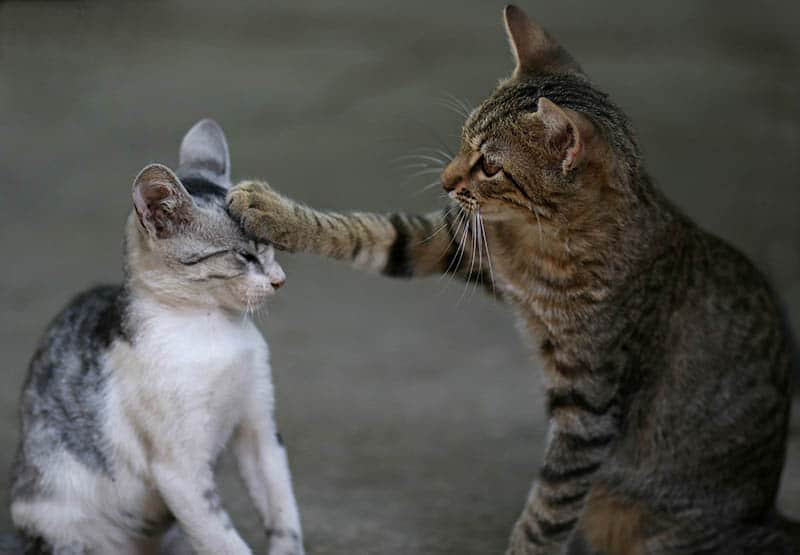
Getting a second cat can bring many benefits to both you and your current feline friend. Here are some of the pros of adding another cat to your household:
- Companionship and socialization: Cats are social creatures, and having a companion can prevent feelings of loneliness and boredom. With a second cat, your current cat will have someone to play with, groom, and cuddle up with.
- Playtime and entertainment: Two cats can provide each other with endless hours of playtime and entertainment. They can chase each other, bat at toys together, and engage in interactive play, relieving their energy and providing mental stimulation.
- Reduced separation anxiety: If you're away from home for long periods, a second cat can help alleviate separation anxiety for your first cat. The presence of another feline companion can provide comfort and reassurance when you're not around.
- Opportunity for learning: Having multiple cats allows them to learn from each other's behaviors. For example, if one cat is more confident or skilled at using the litter box or scratching post, the other may learn by observing.
- Increased family bond: Adding another cat can strengthen the bond within your family dynamic. You'll have more opportunities for cuddles, laughter, and heartwarming moments as you witness the unique relationship that forms between your cats.
While there are definitely pros to getting a second cat, it's essential to consider the additional responsibilities, expenses, and potential conflicts that may arise before making this decision.
Companionship and socialization
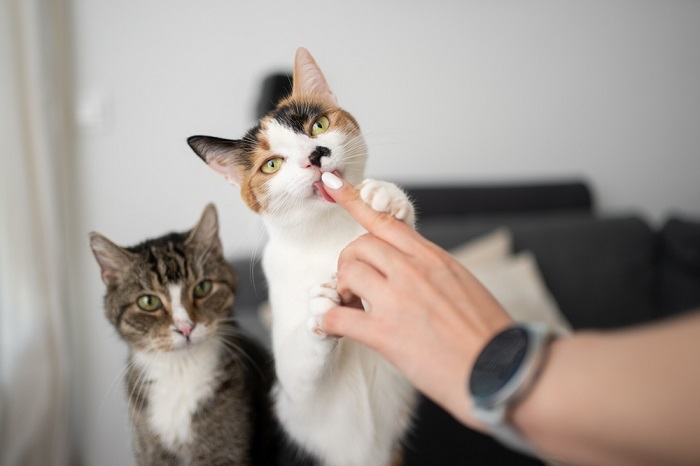
Having a second cat can greatly enhance companionship and socialization for both cats. Cats are naturally social creatures, and adding another feline friend to the household can prevent feelings of loneliness and boredom. They can bond with each other through playing, grooming, and cuddling, providing constant companionship that humans may not always be able to provide.
With a second cat, playtime and entertainment are taken to a whole new level. The two cats can engage in interactive play, chase each other around the house, or bat at toys together. This not only relieves their energy but also provides them with mental stimulation.
Another benefit of having multiple cats is the potential reduction in separation anxiety. If you are away from home for long periods of time, having another cat can provide comfort and reassurance to your first cat. The presence of a feline companion can alleviate feelings of stress and anxiety when you’re not around.
Furthermore, having more than one cat allows them to learn from each other's behaviors. They can observe and mimic skills such as using the litter box or scratching post. This means that you won't have to spend as much time training each cat individually, as they can learn by watching their furry sibling.
Overall, companionship and socialization are major advantages of getting a second cat. It strengthens the bond within your family dynamic and provides endless opportunities for heartwarming moments as you witness the unique relationship that forms between your cats.
Playtime and entertainment
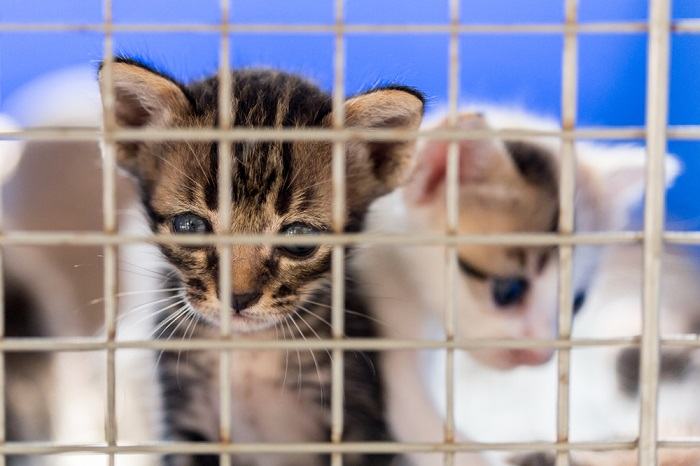
Having a second cat can greatly enhance playtime and entertainment in your home. With two cats, there is a greater opportunity for interactive play and fun. They can engage in chase games, pounce on each other, or bat at toys together, creating an exciting and dynamic environment.
Playing with another cat also provides them with mental stimulation. They can challenge each other's hunting skills and keep each other physically active. This can be particularly beneficial if you have an energetic cat who needs more playtime than you can provide alone.
Additionally, having a playmate can prevent boredom and destructive behavior. Cats are naturally curious and need mental stimulation to stay engaged. A second cat can offer constant companionship and interaction, minimizing the chances of them becoming bored or engaging in destructive behaviors like scratching furniture or excessive grooming.
Not only does this benefit their physical health by promoting exercise, but it also improves their overall wellbeing by reducing stress and anxiety. Playtime serves as a healthy outlet for their natural instincts and helps to lighten their mood.
In conclusion, getting a second cat expands the opportunities for playtime and entertainment in your home. It creates an environment where they can engage in interactive games, challenge each other's skills, and keep each other mentally stimulated. The presence of another feline companion enriches their lives and ensures they have constant entertainment and companionship.
Cons of Getting a Second Cat

While there are many benefits to getting a second cat, it is essential to consider the potential downsides before making a decision. Here are some cons to think about:
- Additional expenses and responsibilities: Bringing another cat into your home means additional financial obligations. You will need to budget for extra food, litter, toys, and veterinary care. Moreover, you might need to invest in additional supplies, such as an extra litter box or scratching post.
- Potential conflicts and territory issues: Cats are territorial creatures, and introducing a new cat into the household can lead to conflicts. They may engage in aggressive behavior, such as hissing, swatting, or even fighting. Territory disputes can arise over resources like food bowls or resting spots. It takes time for cats to establish their hierarchy and adjust to sharing space.
To mitigate these challenges, it's crucial to provide separate spaces and resources for each cat initially and gradually introduce them under supervised conditions.
In summary, getting a second cat comes with additional expenses and responsibilities. It also poses the risk of conflicts between the new addition and existing feline residents due to territorial instincts. However, with proper introductions and management techniques, these issues can often be resolved, ensuring a harmonious coexistence between all cats in the long run.
Additional expenses and responsibilities

Bringing a second cat into your home may seem like a wonderful idea, but it's important to consider the additional expenses and responsibilities that come with it. Firstly, there will be increased financial obligations. Along with providing food, litter, and toys for your new feline companion, you'll also need to factor in additional veterinary care costs. Regular check-ups, vaccinations, and potential medical emergencies can add up quickly. Moreover, having two cats means doubling your expenses on essential supplies such as litter boxes, scratching posts, and beds.
In addition to the financial aspect, another drawback of getting a second cat is the added responsibility. Taking care of one cat requires time and effort – imagine multiplying that by two! You'll need to devote more time to play with and interact with each cat individually to ensure they receive the attention they need.
Furthermore, having multiple cats may require more frequent cleaning and maintenance tasks. Additional litter boxes will need to be cleaned regularly, as well as feeding areas and bedding. Additionally, if you travel frequently or have a busy schedule, arranging proper care for both cats can be challenging.
Before bringing another cat into your home, consider whether you have the time and financial resources to provide for their needs adequately. It's important to evaluate these factors carefully before making a decision that will impact both your life and the well-being of your furry friends.
Potential conflicts and territory issues
Bringing a second cat into your home can sometimes lead to potential conflicts and territory issues. Cats are known for being territorial animals, and when a new cat enters their established environment, it can disrupt the balance.
Introducing a new cat may trigger territorial behaviors in the existing resident cat. They may display aggression, hissing, or even marking their territory by spraying urine. This can create tension and stress for both cats involved. It's important to handle the introduction carefully to minimize these potential conflicts.
Territory disputes can also arise if there is a limited amount of space in your home. Each cat needs their own areas to eat, sleep, and play without feeling threatened or crowded. If resources are scarce or unevenly distributed, it can lead to competition and hostility between the cats.
To prevent conflicts and promote harmony, provide multiple litter boxes, feeding stations, and resting areas throughout your home. This will give each cat their own designated spaces and reduce the likelihood of resource guarding. Additionally, gradually introduce the cats to each other through scent swapping and controlled face-to-face interactions under supervision.
By addressing potential conflicts and ensuring adequate territory for each cat, you can increase the chances of a successful multi-cat household. Patience, understanding, and careful management are key in fostering a peaceful coexistence between your furry friends.
Tips for Introducing a Second Cat
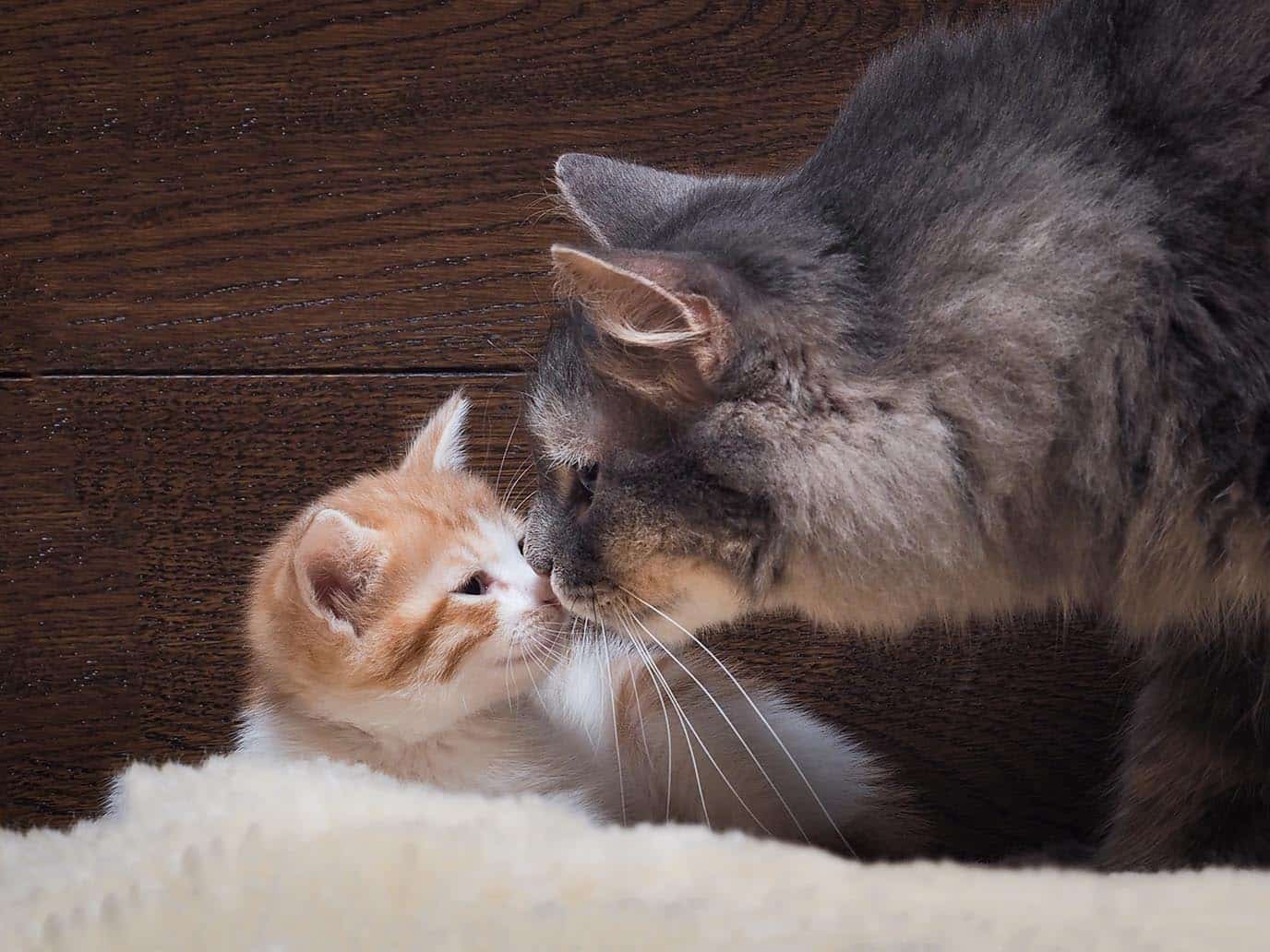
Introducing a second cat into your home requires careful planning and patience to ensure a smooth transition. Here are some tips to help you introduce your new feline friend to your existing cat:
- Gradual introduction process: Start by keeping the cats separated in different rooms, allowing them to become familiar with each other's scent through scent swapping. You can do this by rubbing a cloth on one cat and then presenting it to the other for sniffing. This helps them get accustomed to each other's presence without direct interaction.
- Controlled face-to-face interactions: Once the cats have become comfortable with each other's scent, you can begin controlled face-to-face interactions. Use a baby gate or screen door to separate them physically while allowing them to see and smell each other. This provides a safe environment for initial encounters.
- Positive associations: During the introductions, associate positive experiences with each other's presence. Offer treats, playtime, and praise when they are near each other or show calm behavior.
- Supervision: Always supervise the interactions between the cats at first. Be prepared to intervene if there is any sign of aggression or tension. Gradually increase their time together under supervision as they become more comfortable.
- Patience and gradual integration: It may take weeks or even months for the cats to fully accept each other. Do not rush the process and allow them to set their own pace.
By following these tips, you can increase the chances of a successful introduction between your new and existing cat, fostering a harmonious relationship over time.
Gradual introduction process

When introducing a second cat to your home, it's important to take a gradual approach to ensure a smooth transition. This process helps the cats become familiar with each other and minimize any potential conflicts or stress.
Firstly, start by keeping the cats separated in different rooms. This allows them to get used to each other's scent without direct interaction. Swap their bedding or rub a cloth on one cat and present it to the other for sniffing. This helps them establish familiarity and acceptance.
Once the cats have become comfortable with each other's scent, begin controlled face-to-face interactions. Use a baby gate or screen door to physically separate them while allowing visual and olfactory contact. This provides a safe environment for initial encounters where they can observe and assess each other's behavior without direct physical contact.
During these face-to-face interactions, create positive associations between the cats' presence and positive experiences. Offer treats, playtime, or praise when they are near each other or displaying calm behavior. This reinforces positive feelings towards each other and helps build a positive association.
It's essential to supervise their interactions at all times initially. Be prepared to intervene if there are signs of aggression or tension. Gradually increase their time together under supervision as they become more comfortable with each other.
Remember, patience is key during this gradual introduction process. Every cat is unique and may require different amounts of time to fully accept each other. By taking it slow and being patient, you increase the chances of fostering a harmonious relationship between your new and existing cat over time.
Creating a harmonious living environment

To ensure a harmonious living environment for multiple cats, there are several steps you can take.
Firstly, provide ample resources for each cat. This means having separate food and water bowls, litter boxes, and scratching posts for each cat. Cats are territorial animals and having their own resources helps prevent competition and potential conflicts.
Additionally, create multiple resting areas throughout your home. Cats appreciate having their own space to relax and feel secure. Provide cozy beds or blankets in different locations so that each cat has their own designated spot.
Maintaining a consistent routine is also essential in creating a harmonious living environment. Cats thrive on predictability, so try to establish regular feeding times, play sessions, and grooming routines. This helps minimize stress and allows the cats to feel more comfortable in their surroundings.
Lastly, be mindful of individual personalities and needs. Some cats may prefer solitude and alone time, while others may crave social interaction. Observe their behavior and provide opportunities for both individual attention and group activities.
By taking these steps to create a harmonious living environment, you increase the chances of your cats coexisting peacefully and enjoying each other's company.
The Benefits of Multi-Cat Household
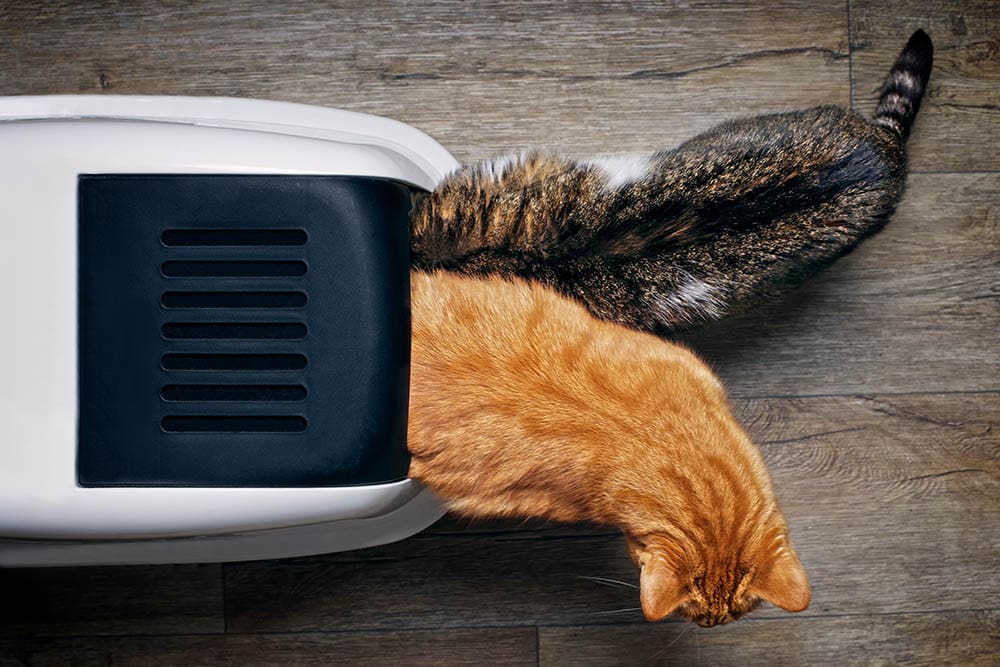
A multi-cat household can offer numerous benefits for both the cats and their owners. One of the main advantages is reduced loneliness and separation anxiety for the cats. Having a feline companion can alleviate feelings of isolation when their human family members are not around. Cats are social animals, and having another cat to interact with can provide comfort and emotional support.
Another benefit is the opportunity for cats to learn from each other. When multiple cats live together, they have the chance to observe and mimic each other's behavior. This can be especially beneficial for kittens or younger cats who may learn important skills from older, more experienced cats. They can learn how to groom themselves, use the litter box, or even play hunt by observing their fellow furry companions.
In addition, a multi-cat household often provides more stimulation and entertainment for the cats. They have constant playmates available, which can help prevent boredom and encourage exercise. Cats are natural hunters, and interacting with each other in friendly play-attacks can help satisfy their predatory instincts.
However, it is essential to ensure that there is enough space, resources, and attention for all cats in a multi-cat household to avoid any potential conflicts or stress. Regular monitoring of their behavior and providing individual attention when needed will help maintain a peaceful coexistence among the cats.
Overall, a multi-cat household can offer companionship, learning opportunities, and enriched environments for all the feline residents involved.
Reduced loneliness and separation anxiety

A multi-cat household can provide a solution to alleviate feelings of loneliness and separation anxiety in cats. Cats are social animals by nature and thrive on companionship. When there is more than one cat in the household, they have constant feline company, which helps reduce feelings of isolation when their human family members are not around.
Loneliness and separation anxiety can be especially common in cats that are left alone for long periods of time due to work or other commitments. Having another cat to interact with can offer comfort and emotional support, reducing these negative emotions.
In a multi-cat household, the cats can provide each other with the companionship they crave. They can cuddle together, groom each other, and engage in playtime together. The presence of another cat helps create a sense of security for individual cats, knowing that they are not alone.
Furthermore, having multiple cats in the home can also help prevent excessive attachment to a single owner. This is particularly helpful if the owner needs to be away for extended periods. The presence of another feline companion ensures that the cat has someone to keep them company and help ease their anxiety during those times.
Overall, a multi-cat household offers an effective way to reduce loneliness and separation anxiety in cats by providing constant companionship from fellow feline housemates.
Opportunity for cats to learn from each other

In a multi-cat household, there is a valuable opportunity for cats to learn from each other. Cats are intelligent and curious beings, and being exposed to another feline companion can provide them with new experiences and knowledge.
One way cats can learn from each other is through observation. They observe and imitate each other's behavior, learning new skills and techniques. For example, if one cat is already using the scratching post regularly, a new cat in the house may learn by watching and start using it as well. This observational learning helps cats develop good habits more quickly.
Cats also have their unique personalities, preferences, and behaviors. When they live together, they often engage in interactions and playtime, which allows them to understand each other better. Through these interactions, cats learn how to communicate effectively with one another using body language, vocalizations, and play signals.
Having multiple cats also encourages mental stimulation through play and exploration. Cats may engage in chasing games or puzzle-solving activities together, providing mental exercise that keeps their minds sharp. The presence of another cat can inspire curiosity and encourage exploration of new territories within the home.
Overall, when cats live in a multi-cat household, they have the opportunity to observe, learn from each other's behavior, communicate effectively, and engage in stimulating playtime together. This enriching environment promotes constant learning and growth for each cat involved.
Conclusion

In conclusion, the decision to get a second cat should be based on personal circumstances and preferences. While there are many benefits to having multiple cats, such as companionship, playtime, and the opportunity for cats to learn from each other, it's important to consider the potential drawbacks as well. Additional expenses and responsibilities, as well as the potential for conflicts and territory issues, should not be overlooked.
Before bringing a second cat into your home, it is crucial to carefully introduce them to ensure a harmonious living environment. Gradual introductions and providing separate spaces for each cat can help minimize stress and reduce the likelihood of conflicts.
While a multi-cat household can provide companionship and reduce loneliness for both cats and their owners, it is essential to assess whether this is the right choice for you and your current cat(s). Every cat is unique, so it's important to consider their individual personalities and needs when making this decision.
Ultimately, weighing the pros and cons of getting a second cat is necessary. It's vital to ensure that you have enough time, resources, and patience to provide for multiple feline companions. With careful consideration and preparation, adding a new furry friend to your family can bring joy, enrichment, and lasting memories for years to come.
Considering personal circumstances and preferences
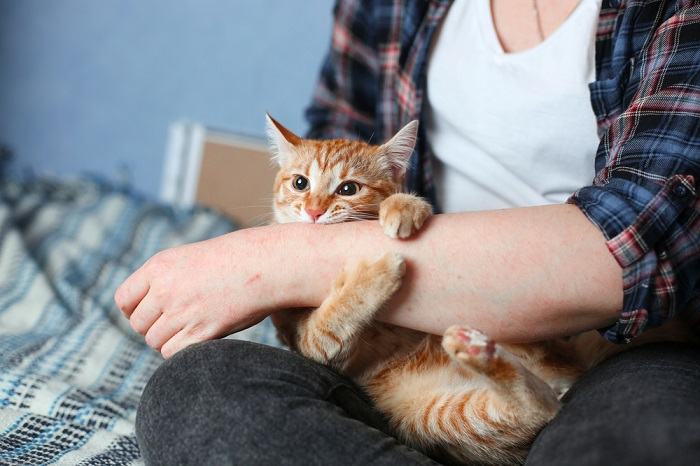
When deciding whether to get a second cat, it is crucial to consider your personal circumstances and preferences. Every household is unique, and what works for one person may not work for another.
Firstly, assess your lifestyle and available resources. Do you have enough time and energy to devote to multiple cats? Cats require attention, playtime, and regular feeding and grooming. Ensure that you can provide adequate care for each cat without feeling overwhelmed.
Secondly, consider the dynamics of your current cat(s). Some cats are naturally more social and enjoy the company of other felines, while others prefer to be the only pet in the household. If you already have a cat, observe their behavior around other cats to determine if they would likely accept a new companion.
Additionally, take into account any allergies or sensitivities within the household. Some people may have allergies or asthma triggered by cat dander. If this is the case, getting a second cat might not be suitable unless appropriate measures are taken to manage allergies effectively.
Furthermore, think about your living space. Do you have enough room to accommodate multiple cats comfortably? Each cat should have their own space for eating, sleeping, and using the litter box to prevent territorial conflicts.
By carefully considering your personal circumstances and preferences before getting a second cat, you can make an informed decision that will lead to a harmonious and happy home for both you and your feline companions.
Weighing the pros and cons of getting a second cat

When considering getting a second cat, it is important to weigh the pros and cons. On the positive side, having multiple cats can provide companionship and socialization for both the cats and their owners. Cats are naturally social animals and can benefit from the presence of a feline friend. They can engage in playtime and entertainment together, keeping each other company while you're away or busy.
However, there are also potential drawbacks to getting a second cat. Additional expenses and responsibilities come with owning multiple cats, including extra costs for food, litter, veterinary care, and other supplies. There may be conflicts and territory issues between the cats as they establish their positions within the household hierarchy. It's essential to consider whether you have the resources, time, and energy to meet the needs of multiple cats.
To make an informed decision about getting a second cat, research different breeds or personalities that would best complement your current cat(s). Consider consulting with a veterinarian or animal behaviorist who can provide guidance on introducing a new cat successfully.
Ultimately, weighing the pros and cons will help you determine if your home environment, lifestyle, and personal circumstances are suitable for welcoming another furry companion into your life.




0 Comments